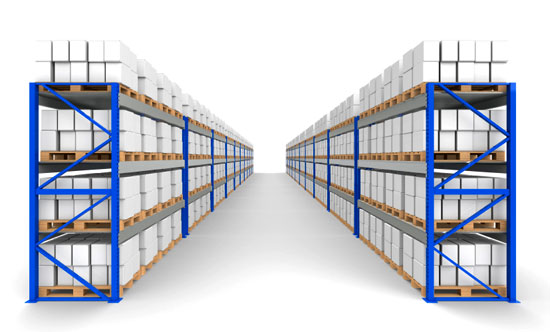7 Ways Industrial Housekeeping Boosts Productivity & Safety
Ways to enhance your operational effectiveness and facility hygiene

Most people work less effectively, are less comfortable, and have poorer attitudes in a messy environment. For industrial facility operators, housekeeping can sometimes lag behind with busy days where people hardly have time to look up, much less deal with the clutter and byproducts of meeting shipping deadlines or production demands.
The need for good housekeeping in a warehouse goes beyond setting a positive frame of mind for workers. While that attitude is always important, other issues are in play, including safety and the way your facility can help you appeal to visiting customers. Manufacturing facilities, warehouses, and other industrial plants should always have a plan to keep clutter down — and productivity up.
Ways to enhance industrial housekeeping
- Effective housekeeping helps you define effective processes by changing your perspective. Understanding the core function and potential of a business is often not understood when people work in, but not on the business. New perspectives, like those you get when your process includes a plan to systematically keep your operation clean, help managers and employees understand ways to improve many processes. When it’s important to leadership that the facility is clean, it becomes important to the people on the floor. This can have a variety of positive effects including greater pride in the workplace.
- Effective housekeeping reduces maintenance costs. If you have running conveyors, scissor lifts, production machinery, palletizers, or other mechanical productivity tools in your facility, you need to focus on keeping areas around that equipment clean. Uncontrolled dust and debris can be very hard on expensive capital equipment that helps the your operation run better. Some ideas for limiting dust and debris include airborne debris control (using curtain walls or strip doors), high-speed doors to segment “dirty” parts of the operation from “clean” parts, systematic maintenance/cleaning, proper shielding of components like bearings and motors, and general housekeeping policies that remove as much debris from the operation as possible.
- Effective housekeeping plugs right into your safety culture. Many companies work hard to maintain a safe operation. A clean facility is very much a part of that. If you have a safety team (best that it’s cross-functional), make certain that facility housekeeping part of its charter. A cleaner facility is a natural accompaniment to safety, and should be treated that way.
- Effective housekeeping helps reduce slips, trips and falls. Falls were the second most common cause of nonfatal occupational injuries, according to a 2013 Bureau of Labor statistical report, and housekeeping is critical when it comes to preventing them. Work to create a system where employees quickly report spills, and provide easily available clean up equipment. Install nonslip safety mats in any area where liquids, grease or oils are common. Keep aisles and other areas clear of debris. Cover and secure cables and other tripping hazards. Build work platforms over pipe runs or rough floor areas. Install handrails on any elevated area. More information: see Dissecting the Slip and Fall Accident.
- Effective housekeeping helps prevent falling objects. Lay your storage areas out with organization in mind, and in specific, to keep people segmented from areas where things might commonly fall. We published a series on specific falling item topics and the ways to prevent them, but in many instances, the risks are inherent to a storage or warehousing operation, so keeping workers separated from these areas as much as possible is critical. Reference: see Pallet Racks and Falling Item Prevention; Conveyors and Falling Item Prevention; and Shelving: How to Prevent Falling Items and Collapses.
- Effective housekeeping makes clutter public enemy #1. Clutter is dangerous in any facility, but particularly so when forklifts and heavy machinery are at work. Clutter leads to poor ergonomics, reduced visibility, and more accidents. Clutter reduces space for people to work and maneuver within a work area, causing them to bend/twist in ways that may contribute to injuries. In storage aisles, anything that forces a forklift to maneuver as it travels may spark disaster. Forklifts should have clear, well-defined, and well-lit pathways as they navigate through a facility. Failure to provide this invites situations where pedestrians may be hit. Racks, machinery, or structural columns could also be hit if forklift drivers are forced to maneuver around pallets, order picking carts, and other clutter left in forklift lanes.
- Effective housekeeping is integral to 5S. Many companies these days adhere to 5S standards. 5S is a philosophy that hones effective work place organization and standardized work procedures. The concept is based off of 5 Japanese words that begin with ‘S’, seiri, seiton, seiso, seiketsu, and shitsuke. When translated to English, there are five primary 5S phases: sorting, set in order, systematic cleaning, standardizing, and sustaining. This means they make cleanliness and organization part of their strategic plan. They turn typical warehouse operations into more efficient profit centers simply by understanding precisely what’s needed to work a task, and then providing those needs in an organized, clean, and productive environment.
More resources
- Ideas for keeping your warehouse clean (Cisco-Eagle blog)
- 5S workstations (Cisco-Eagle)
Tags: warehouse cleanliness, 5S principles, industrial hygiene
Scott Stone is Cisco-Eagle's Vice President of Marketing with 35 years of experience in material handling, warehousing and industrial operations. His work is published in multiple industry journals an websites on a variety of warehousing topics. He writes about automation, warehousing, safety, manufacturing and other areas of concern for industrial operations and those who operate them.



